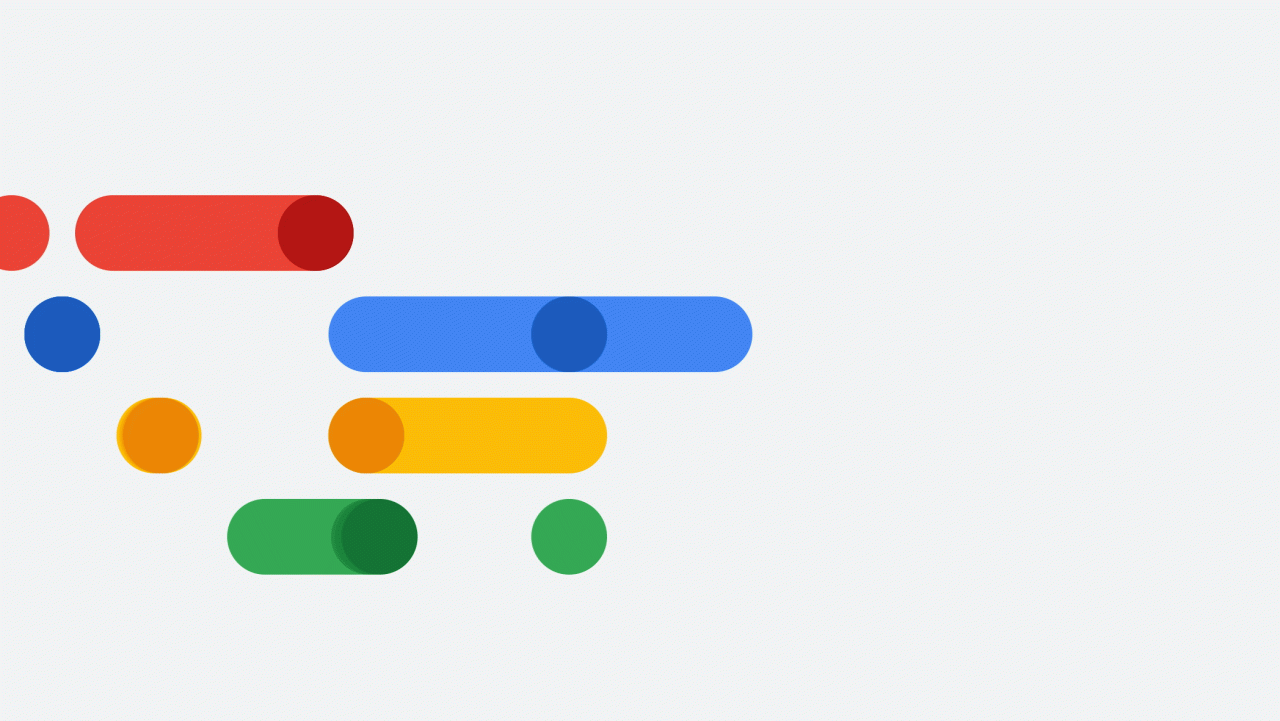Over the past decade, Google has continuously enhanced its search engine with cutting-edge artificial intelligence (AI) capabilities. By embedding AI at multiple levels—from natural language understanding to personalized content suggestions Google has redefined how users find information online. These AI-driven developments not only improve search relevance and user experience, but also create fresh opportunities for content creators, digital marketers, and website owners aiming to optimize for search engine performance and maximize Google AdSense revenue.
The Evolution of AI in Google Search
Google’s AI journey began with algorithms like RankBrain and BERT, which fundamentally changed how the engine interprets queries and content.
-
RankBrain (2015): Introduced as a machine‑learning system that deciphers ambiguous queries by learning from past searches.
-
BERT (2019): Employed bidirectional transformers to grasp the context of words within sentences, making search results more semantically accurate.
-
MUM (2021): The Multitask Unified Model processes information across modalities (text, images, video) and in multiple languages simultaneously.
Each milestone improved query comprehension, leading to smarter, more relevant results. For website owners, this shift necessitated a focus on content that truly addresses user intent, rather than purely keyword‑centric pages.
Key AI-Powered Features in Today’s Search
Google has rolled out several AI-based functionalities that shape the modern search experience:
A. Passage Ranking
AI identifies and surfaces specific passages within long-form content that directly answer a user’s question beneficial for in-depth articles where pinpoint accuracy matters.
B. AI‑Generated Snippets
Leveraging AI, Google crafts concise, direct answers at the top of results, drawn from multiple sources to offer comprehensive summaries.
C. Conversational Search via Google Assistant
Integrates generative AI to handle follow‑up questions and simulate fluid dialogue, enabling a more interactive search flow.
D. Image and Video Understanding
AI analyzes visual content to extract context, improving image‑ and video‑based queries by matching objects, scenes, or actions.
These features gradually alter user behavior: they expect faster, more conversational, and visually enriched responses. Website owners must adapt, ensuring their content aligns with these AI-driven result types.
SEO Implications of AI Integration
As Google’s AI becomes more sophisticated, SEO strategies evolve in response:
A. Emphasis on Topical Authority
AI favors content hubs and comprehensive guides that cover a subject holistically, rewarding depth over superficial keyword stuffing.
B. User Experience Signals
Metrics such as page load speed, mobile‑friendliness, and low cumulative layout shift (CLS) now signal content quality—areas where AI models predict user satisfaction.
C. Structured Data and Schema Markup
Rich result eligibility increases when content is annotated with structured data. AI can then better understand and display your information in rich snippets.
D. E‑A‑T (Expertise, Authoritativeness, Trustworthiness)
AI algorithms assess the credibility of content sources. Establishing author credentials, citing reputable sources, and maintaining an updated site history boost perceived trust.
By aligning content and technical SEO with AI’s evolving criteria, sites stand a better chance of securing top positions in search results.
The Role of AI in Google Ads and AdSense
Google’s advertising platforms also integrate AI to maximize monetization for both advertisers and publishers:
A. Smart Bidding
Automatically adjusts bids in real time using conversion‑focused machine learning predictions, helping advertisers secure the best ROI.
B. Responsive Search Ads
AI tests various headline‑and‑description combinations to determine the top‑performing ad creatives.
C. Performance Max Campaigns
A unified campaign type where AI allocates budget across Search, Display, YouTube, and Discover based on conversion likelihood.
D. AdSense Auto Ads
Publishers enable AI to place and format ads dynamically, optimizing for revenue without manual A/B testing.
For publishers relying on AdSense, Auto Ads and AI‑suggested placements can significantly boost earnings, while maintaining a seamless user experience.
Strategies for Maximizing Google AdSense Revenue in an AI‑Driven World
To thrive in a landscape shaped by AI, content creators and site owners should employ targeted tactics:
A. Optimize for Featured Snippets and Passage Ranking
Craft concise, self‑contained answers at the beginning of articles. Use logical structuring (headings, bullet points).
B. Implement Auto Ads with Custom Controls
Enable AdSense Auto Ads, then fine‑tune ad density, formats, and page-level settings to prevent intrusive placements.
C. Leverage AI‑Driven Content Tools
Utilize generative AI platforms to draft outlines, optimize headlines, or suggest keyword clusters—always editing to add unique insights.
D. Focus on Page Experience
Enhance site performance metrics: minimize JavaScript bloat, compress images, and streamline third‑party scripts. Good UX signals to Google’s AI that your site is valuable.
E. Continuous Testing and Analysis
Use Google Analytics and AdSense reports to monitor user engagement, bounce rates, and ad revenue. AI‑powered dashboards can surface trends or anomalies faster.
This multi‑pronged approach ensures that content not only ranks well but also monetizes effectively.
Content Creation Best Practices for AI‑Optimized SEO
When producing content in 2025 and beyond, consider these AI‑friendly guidelines:
A. Deep Topic Research
Rely on primary sources, industry reports, and expert interviews. AI rewards original research and unique data.
B. Natural Language and Semantic Richness
Write in a conversational tone, incorporating synonyms, related terms, and question‑answer formats to align with AI’s semantic understanding.
C. Multimodal Content Integration
Embed relevant images, infographics, podcasts, or videos. AI models like MUM can use these signals to enrich search results.
D. Clear Logical Structure
Break up long passages with descriptive headings, numbered or lettered lists, and call‑out boxes for definitions or tips.
E. Regular Updates and Versioning
Keep evergreen content current AI models favor the latest information. Note update dates visibly to signal freshness.
By following these principles, creators can adapt seamlessly to AI‑powered ranking factors.
Addressing Challenges and Ethical Considerations
While AI brings performance gains, it also poses potential risks:
A. Over‑Optimization and AI Gaming
Excessive reliance on generative AI can produce thin, repetitive content that may trigger Google’s helpful‑content algorithm.
B. Bias and Misinformation
AI models trained on large data sets may inadvertently amplify inaccuracies. Site owners must fact‑check and cite credible sources.
C. Privacy and Personalization
AI‑driven personalization raises data privacy concerns. Comply with global regulations (GDPR, CCPA) and implement transparent consent mechanisms.
D. Algorithmic Transparency
Google’s AI systems are complex and partially opaque. Staying informed via official Google Search Central updates is essential to avoid penalties.
Proactively addressing these issues fosters long‑term sustainability and user trust.
Future Outlook: What’s Next for AI and Search?
Looking ahead, we can anticipate several emerging trends:
A. Advanced Conversational Agents
Generative AI assistants may handle end‑to‑end task completion booking appointments, drafting emails directly from search results.
B. Augmented Reality (AR) and Visual Search
AI‑powered AR overlays could surface local business info or product specs while you scan the real world with your camera.
C. Personalized Knowledge Graphs
AI will refine individualized knowledge graphs, tailoring search results to each user’s interests and search history.
D. Voice and Multilingual AI
Improved real‑time translation and voice recognition will make search more accessible to global audiences.
Staying at the forefront of these trends will require agility, investment in emerging technologies, and a commitment to user‑centered design.
Conclusion
Google’s integration of AI across search and advertising platforms marks a transformational shift for the entire digital ecosystem. From enhanced query comprehension to personalized ad delivery, AI tools empower both end users and content creators. To thrive, website owners and marketers must embrace AI‑friendly SEO, optimize ad placements with AI‑driven features, and adhere to best practices that prioritize quality, relevance, and user experience. By doing so, they can secure higher search rankings, boost AdSense revenue, and remain competitive as the AI revolution continues to reshape online search.















